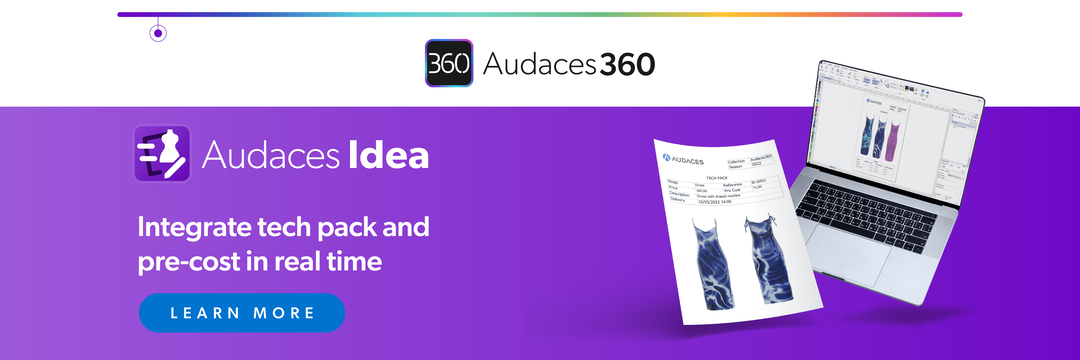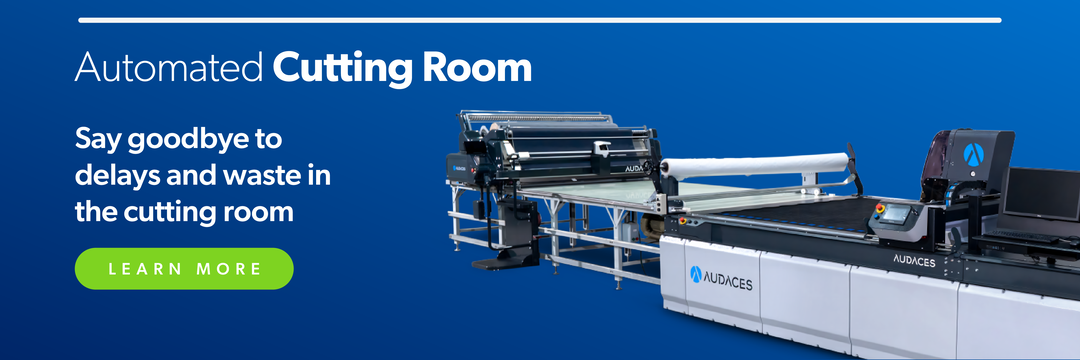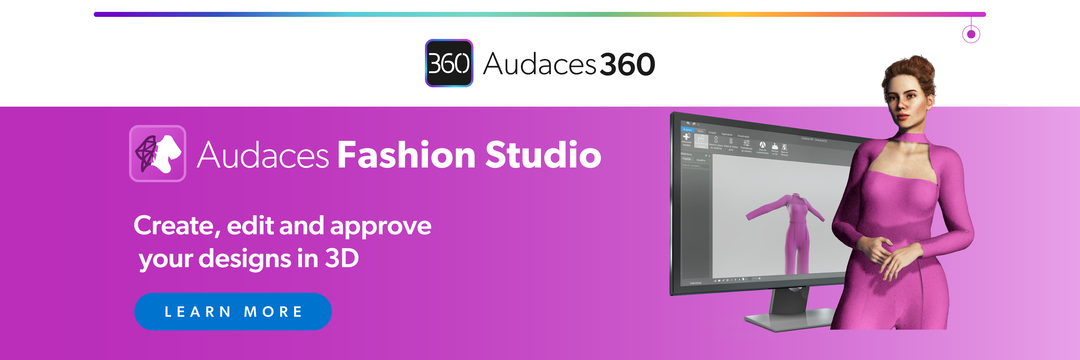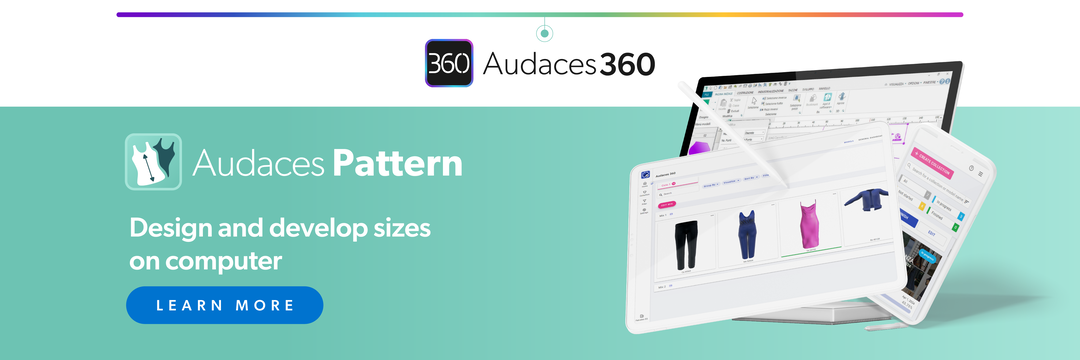Summary
- Cutting plotters are transforming apparel production by modernizing one of the most time-consuming steps in manufacturing.
- They increase precision, reduce fabric waste, and speed up production while maintaining consistent quality.
- Want more insights to boost your fashion business? Subscribe to our newsletter!
Deadlines are tighter. Orders are more complex. Customers expect flawless results at record speed. In this new reality, fashion manufacturers can’t afford inefficiencies in their production line.
That’s where a cutting plotter makes all the difference. This equipment prints patterns and cutting marks directly onto paper with high precision. It ensures perfect alignment and saves hours of manual work.
If you’ve been wondering whether your factory is ready to take this step, this article is for you. You’ll discover how it works, its applications, and how to get the most out of the equipment.
Happy reading!
Sumário
What is a cutting plotter?
A cutting plotter is a high-precision device to print and cut large-format materials used in industrial production. In the fashion industry, it plays a key role in transferring digital layouts from CAD systems to physical materials.
This makes it an essential tool for businesses that depend on consistent, large-scale production and professional finishing.
Beyond fashion, cutting plotters are also common in sectors like signage, packaging, and automotive manufacturing.
They are ideal for printing layouts, templates, or detailed patterns that guide subsequent production processes. By combining printing and cutting capabilities, these machines ensure that every piece aligns perfectly with the original digital design.
In fashion manufacturing, for instance, a cutting plotter allows companies to print markers that guide the fabric cutting process. These markers show exactly where each pattern piece should be to optimize material use.
As a result, you reduce waste and increase productivity, two crucial advantages in competitive industries.
How does a cutting plotter work?
A cutting plotter works by receiving digital files from CAD software that contain layout and cutting information. Once you load the file, the plotter translates this data into precise movements of its printhead or cutting head.
Depending on the plotter type, it may use inkjet printing to mark paper with layout lines. It might also use a blade to cut materials directly.
The machine uses rollers and sensors. These parts help the material move smoothly and stay aligned during printing or cutting. This mechanical precision guarantees that the results match the digital design, even in high-speed production environments.
The process is automated and can handle multiple layouts in sequence, which reduces manual handling and production time.
What are the types of cutting plotters and their applications?
There are different types of cutting plotters available, each designed to meet specific production needs.
Here are the most common types:
- Inkjet cutting plotters
These machines use inkjet technology to print high-resolution layouts, markers, and technical drawings. They are ideal for the fashion and apparel industry to print cutting markers that guide fabric cutting.
- Blade-based cutting plotters
Equipped with a small, sharp blade, these plotters cut materials such as vinyl, adhesive films, cardboard, or thin textiles. They are perfect for signage, labeling, and packaging applications that demand detailed cuts and clean edges.
- Hybrid cutting plotters
These advanced systems combine printing and cutting functions in one device. They are ideal for industrial environments where efficiency and precision are key.
Learn more: When is the right time to invest in a plotter machine?
Which materials can I cut with a plotter?
A cutting plotter is a versatile tool capable of handling a wide range of materials used in different industries. The choice of material depends on the type of plotter and the specific application.
Below are some of the most common materials used with cutting plotters and how they perform in each context.
Fabric
Plotter devices are popular in the fashion and textile industries to handle fabric layouts and optimize material use.
When you pair it with printed cutting markers, they help ensure that every piece is according to the digital pattern. This precision minimizes waste, speeds up production, and guarantees consistent results across all garments in a collection.
In addition, when you integrate it with CAD systems, it follows the exact pattern coordinates. This ensures that every contour, notch, and detail is flawless.
Learn more: How to overcome slow cutting in your apparel manufacturing?
Vinyl
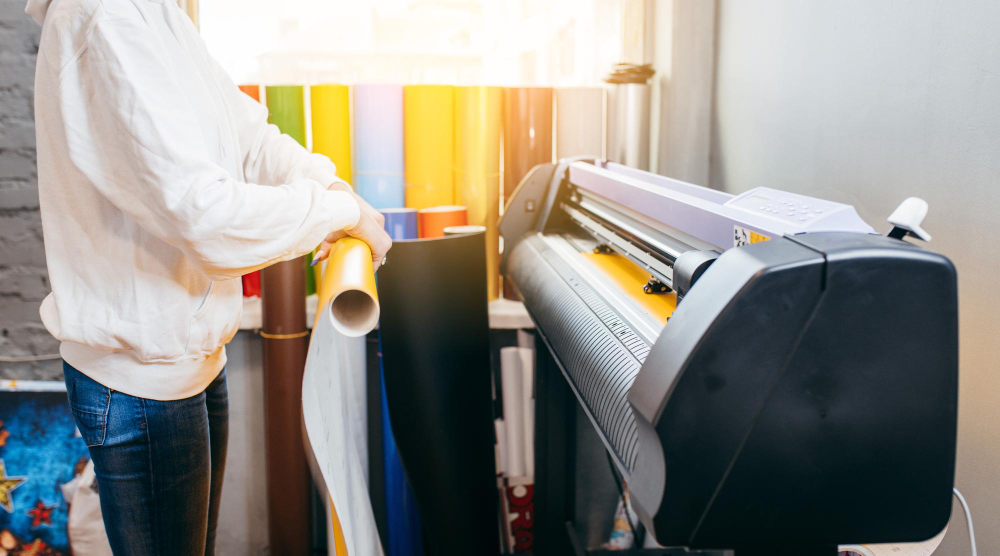
Vinyl is another popular material for cutting plotters, especially in signage, automotive design, and customization. It’s a durable and flexible material that you can cut into intricate shapes with clean edges.
This makes it ideal for producing decals, lettering, or decorative applications that require sharp details and long-lasting results.
Paper
Companies can use different types of paper depending on the project’s requirements. For instance, lightweight paper is suitable for quick prototypes or short runs. Meanwhile, heavier paper provides durability for repeated use in production environments.
The ability to adjust line thickness and printing density ensures that markers remain clear even in complex layouts.
In other industries, plotters can also cut or print on paper to create labels, templates, or packaging prototypes.
Adhesive materials
Adhesive materials, such as self-adhesive films and label stock, are common for both decorative and industrial purposes. These materials come in different finishes, like matte, glossy, or transparent. You can apply them to various surfaces including metal, glass, and fabric.
Ready to take your company to the next level and maximize productivity? Get our free exclusive guide filled with expert tips to make it happen!
How to prepare files for cutting on a cutting plotter
The process begins with creating or importing designs in CAD software, with all shapes, patterns, and notches. Next, save the files in compatible formats, depending on the plotter’s specifications.
Remember that maintaining clean, continuous lines and properly closed shapes ensures that the machine interprets the data without errors.
Finally, conducting a test cut or print before full production helps verify alignment and precision. This step allows for small adjustments in scale, margins, or positioning without wasting materials.
What precautions can I take to avoid cutting errors?
These are some tips you can follow to avoid cutting errors while still in the printing stage:
- Regular maintenance: Keeping the machine clean and ensuring proper calibration are simple practices that prevent most technical issues.
- Proper material alignment: Always ensure you’re loading the material correctly, with even tension and straight edges.
- Monitor the job in progress: Especially for long runs or heavy materials. Real-time supervision allows quick responses to potential issues like jams or feed misalignment.
Learn more: How to set up a plotter room for your fashion business?
How to optimize productivity using a cutting plotter
Optimizing productivity involves more than just speed. It’s about creating an efficient, connected workflow that reduces waste, saves time, and maintains consistent quality.
Here are some ways you can achieve it:
Integration with CAD and ERP systems
Integrating your cutting plotter with CAD and ERP systems transforms how information flows across departments.
CAD software provides precise digital patterns and layouts. At the same time, ERP systems manage production schedules, materials, and orders.
Together, these systems allow automatic file sharing and job prioritization, minimizing manual input and reducing human error.
Learn more: What makes industrial CAD a game-changer in fashion?
Maximum material use
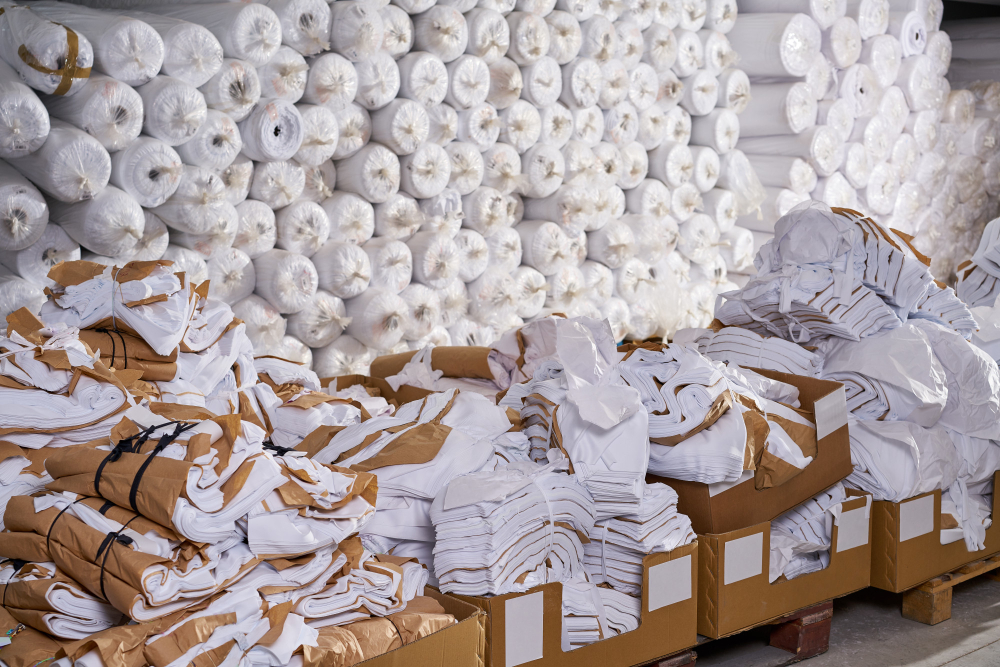
By printing and cutting directly from digital layouts, manufacturers can position pattern pieces more efficiently. This helps reduce fabric and paper waste.
Moreover, advanced marking algorithms in CAD software automatically calculate the best arrangement for each design. It’s important to ensure that you’re using every centimeter of material effectively.
Learn more: 5 types of industrial machines for your apparel production
Long-term savings
Automation reduces manual labor and minimizes the risk of costly errors, such as reprints or wasted material. Over time, this consistency translates into predictable, lower operating costs and higher productivity levels.
Additionally, because modern plotters offer durability and low maintenance, companies benefit from reliable performance with minimal downtime.
Plan your marking and cutting queue
One of the most effective ways to improve efficiency is by organizing jobs in a clear sequence. Schedule layouts and cuts according to material type, production priority, and machine availability.
This way, you can avoid bottlenecks and reduce idle time.
Good planning ensures that the plotter runs continuously and that materials flow smoothly through each stage of production.
Learn more: 4 reasons you should invest in a cutter room for fashion
Standardize processes
With a cutting plotter, you can predefine tasks such as file preparation, material setup, and cutting parameters. This allows teams to repeat the same operations without variations, ensuring every job follows the same high-quality standards.
Production becomes more predictable, and the result is a smoother workflow, fewer mistakes, and greater confidence in meeting deadlines.
Increase productivity in your pattern making department with Audaces
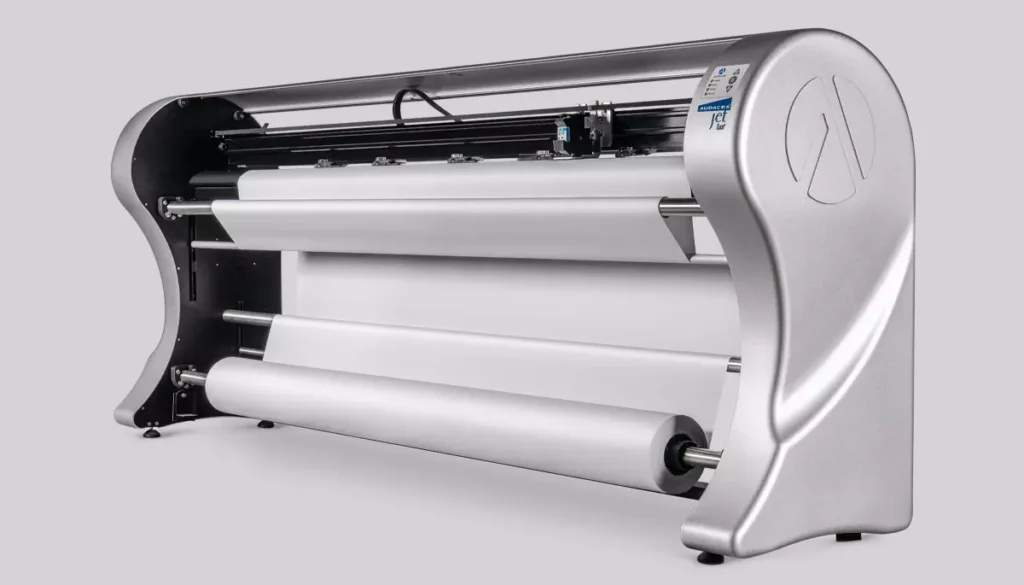
Audaces Jet Lux
Audaces Jet Lux is the top choice on the market for fashion businesses aiming to invest in a plotter machine.
We have leveraged our over 30 years of textile industry expertise to create a cutting-edge plotter. It’s robust, fast, and precise, capable of meeting the demands of businesses of all sizes.
Completely integrated into our full software package for the fashion industry, it delivers the efficiency your company needs.
Want to stay up to date on the latest fashion industry news? Subscribe to our newsletter!
FAQ
A cutting plotter is a high-precision device to print and cut large-format materials used in industrial production. In the fashion industry, it plays a key role in transferring digital layouts from CAD systems to physical materials.
A cutting plotter works by receiving digital files from CAD software that contain layout and cutting information. Once you load the file, the plotter translates this data into precise movements of its printhead or cutting head.
You can cut materials like fabric, vinyl, paper, and adhesive materials.



